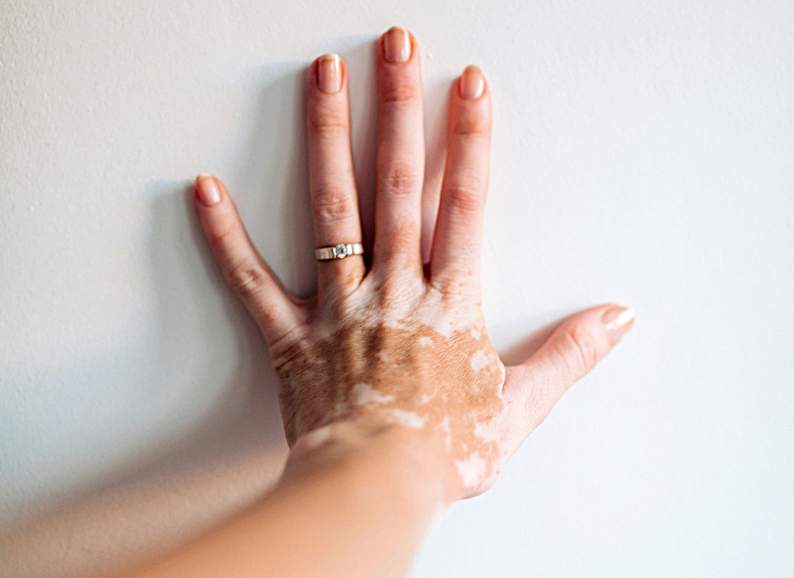words Alexa Wang
Our skin is much more than just a protective barrier between us and the world. It’s a dynamic part of our body that responds to external and internal factors, and its pigmentation – the colour of our skin – plays a huge role in how we look and feel. Yet, many of us don’t really think about what skin pigmentation is or what causes those changes that can appear as freckles, sunspots, or patches of darker or lighter skin.
Let’s dive into the fascinating world of skin pigmentation, peel back the layers, and explore what’s happening beneath the surface.
What Is Skin Pigmentation, Exactly?
At its core, skin pigmentation refers to the natural colour of your skin. This colour is determined by the amount and type of melanin produced by cells known as melanocytes. Melanin is the pigment responsible for the wide variety of skin tones we see across different individuals.
But it’s not just genetics that influence melanin production. Environmental factors, health conditions, and even age can lead to changes in skin pigmentation. That’s why sometimes you may notice new spots or patches forming on your skin out of nowhere.
Why Does Skin Pigmentation Change?
Our skin is constantly adapting to its environment, and pigmentation changes are one of the most common ways it responds. There are many reasons for this, some of which are pretty surprising.
- Sun Exposure – Spending time in the sun is probably the most well-known cause of pigmentation changes. When your skin is exposed to UV rays, it responds by producing more melanin in an effort to protect itself. This can lead to a sun-kissed tan, but it can also cause dark spots or freckles to appear over time.
- Hormonal Changes – Hormones can play a significant role in how much melanin your skin produces. This is why some women develop dark patches during pregnancy, a condition known as melasma. Hormonal birth control can also trigger pigmentation changes.
- Ageing – As we age, the melanocytes in our skin don’t function as efficiently as they once did. This can result in age spots, or areas of hyperpigmentation, popping up over time, especially in areas of the skin that have had the most sun exposure.
- Skin Conditions – Some medical conditions and skin disorders can lead to changes in pigmentation. For example, vitiligo is a condition that causes the loss of skin pigment in patches, while other disorders can cause an overproduction of melanin.
Common Pigmentation Issues
Not all pigmentation changes are created equal, and some are much more common than others. While we might love a sun-kissed glow, many pigmentation issues can feel less than desirable. Here are a few to watch for:
Hyperpigmentation
This is probably the most common skin pigmentation issue. It happens when the skin produces too much melanin, leading to dark patches or spots on the skin. It can be caused by things like sun exposure, inflammation, or certain medications. Hyperpigmentation is often harmless but can be frustrating for those looking for a more even skin tone. Why not book a consultation with a skin clinic to discover the best treatment options?
Hypopigmentation
The opposite of hyperpigmentation, hypopigmentation happens when your skin isn’t producing enough melanin, causing lighter patches. Vitiligo is the most well-known condition that leads to hypopigmentation, but other factors like burns or infections can also cause it.
Melasma
Melasma is a pigmentation disorder where larger, darker patches of skin develop, typically on the face. It’s often triggered by hormonal changes, which is why it’s commonly associated with pregnancy, although sun exposure can also make it worse.
How to Care for Skin Pigmentation
So, what can you do to keep your skin looking its best, even if pigmentation issues arise? The good news is, there are ways to both prevent and manage skin pigmentation concerns.
- Wear Sunscreen Daily – This cannot be stressed enough. One of the most effective ways to protect your skin from unwanted pigmentation changes is by wearing sunscreen every single day, even when it’s cloudy. UV rays are sneaky and can cause damage when you least expect it.
- Exfoliate Regularly – Exfoliating helps to remove dead skin cells and can improve the appearance of hyperpigmentation over time. Just be careful not to overdo it, as too much exfoliation can irritate the skin and potentially make pigmentation issues worse.
- Consult a Dermatologist – If you notice any significant changes in your skin’s pigmentation, it’s always worth checking in with a dermatologist. They can help identify the cause and offer targeted treatments, such as creams or laser therapy, that can make a real difference.
- Consider Natural Remedies – For those who prefer a gentler approach, ingredients like vitamin C, niacinamide, and licorice root extract can help brighten the skin and reduce the appearance of dark spots over time.
Preventing Future Pigmentation Problems
While some changes in pigmentation are inevitable, especially with age, there are steps you can take to minimise the chances of further issues developing. It all boils down to maintaining a solid skincare routine and being mindful of the factors that can influence your skin’s health.
Stay Hydrated
Healthy, hydrated skin is more resilient, so make sure you’re drinking enough water and moisturising regularly.
Avoid Picking at Your Skin
Scratching or picking at blemishes can lead to inflammation, which may cause dark spots to form. It’s tempting, but it’s always better to leave your skin alone and let it heal naturally.
Get Regular Skin Checks
Keep an eye on your skin for any changes in pigmentation, especially if you spend a lot of time outdoors. Regular skin checks with a professional can help catch any issues early on.
Our skin is complex and constantly evolving, and pigmentation is just one of the many ways it shows this. Understanding what’s going on beneath the surface not only helps you care for your skin but also gives you a deeper appreciation for what it does every day. So, next time you notice a new freckle or dark spot, take a moment to consider the layers of science and care working behind the scenes.







